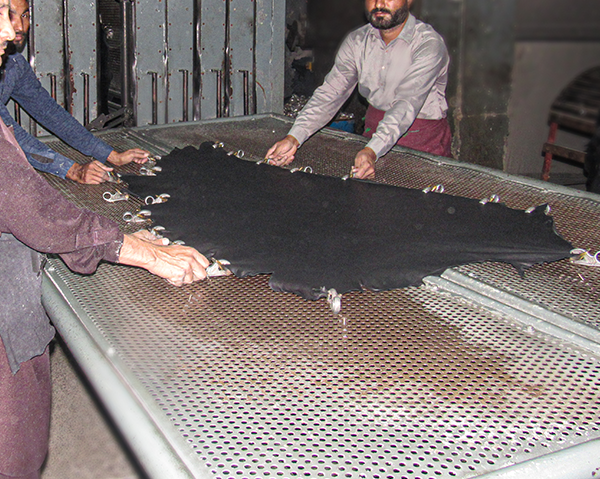Toggling is one of the important drying and shaping stages in the leather finishing process, carried out to preserve dimensions, prevent shrinkage, and create a smooth, uniform surface. This method is widely used in the production of luxury leather goods that require high precision in size, shape, and surface quality.
In this process, after conditioning or milling, each piece of leather is manually stretched and secured with special metal clips onto a perforated metal frame known as a toggle frame. These frames contain multiple holes that allow even circulation of air and heat across the entire leather surface. This setup removes any wrinkles or folds, leaving the leather flat and smooth in preparation for drying.
The frames are then placed into controlled-temperature drying chambers. The uniform circulation of air and heat within these chambers ensures that the leather dries evenly, without shrinking, warping, or deforming. This feature is particularly important for leathers used in the production of handmade bags, luxury shoes, or leather panels for furniture and automotive interiors.
The main advantage of toggling is that it preserves the natural grain and surface uniformity of the leather while preventing dimensional changes. It also prepares the leather in the best possible way for final operations such as coating, embossing, or polishing. The result of this stage is leather that is not only visually smooth and flawless but also structurally stable and durable.
Key characteristics of the toggling process in Iran’s leather industry:
- Stretching and securing leather onto perforated metal frames to maintain shape and dimensions
- Drying in heated chambers with evenly distributed airflow
- Prevention of shrinkage, warping, or surface deformation
- Preservation of natural grain uniformity and dimensional precision
- Ideal for producing luxury leather goods with high surface and dimensional quality


No comments yet.